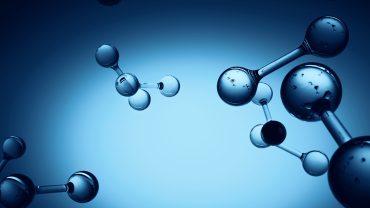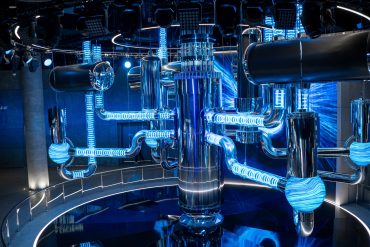
- Green Tech
Breakthrough Biomass Tech Delivers Ultra-Pure Hydrogen
5 minute read

Advanced biomass technology enables carbon-negative hydrogen production while reaching record-breaking 99.8% purity levels for industrial applications
Key Takeaways
- 99.8% hydrogen purity achieved: Sorption enhanced steam reforming (SESR) produces nearly pure hydrogen from biomass at lower temperatures than conventional methods, reaching 0.118 gH2 per gram of biomass.
- $19.2 billion North American market: The hydrogen generation sector grows at 5.8% annually through 2034, driven by clean energy mandates and infrastructure investment.
- Negative emissions capability: SESR technology integrates CO2 capture during biomass conversion, enabling carbon-negative hydrogen production while meeting decarbonization goals.
Introduction
Advanced biomass conversion technologies now deliver hydrogen with unprecedented purity while capturing carbon emissions. University of the Basque Country researchers demonstrate that sorption enhanced steam reforming (SESR) achieves 99.8% hydrogen purity compared to 65.2% from conventional steam reforming methods.
The breakthrough addresses two critical challenges in clean energy transition: producing high-quality hydrogen for industrial applications and achieving negative emissions through integrated carbon capture. This development positions biomass-based hydrogen production as a viable alternative to fossil fuel-dependent methods.
Key Developments
Researchers compared pyrolysis followed by conventional steam reforming (PY-SR) against pyrolysis followed by sorption enhanced steam reforming (PY-SESR) across temperature ranges of 450-750°C. The SESR process operates efficiently at lower temperatures between 525-600°C with reduced steam-to-biomass ratios of 1-3.
The study utilized continuous fast pyrolysis of pine wood sawdust in a conical spouted bed reactor at 500°C. Steam reforming of pyrolysis vapors occurred in a fluidized bed reactor using commercial nickel catalysts with dolomite as a CO2 sorbent.
SESR technology produces 0.118 grams of hydrogen per gram of biomass compared to 0.109 grams from conventional methods. The process achieves full conversion of pyrolysis vapors while maintaining operational flexibility across broader temperature and pressure ranges.
Market Impact
The global hydrogen market experiences rapid transformation with clean hydrogen production gaining momentum through regulatory incentives and decarbonization mandates. Hydrogen generation projects to grow at 10.3% compound annual growth rate from 2025 to 2028.
North American hydrogen generation reaches $19.2 billion in market value during 2024, expanding at 5.8% annually through 2034. Government funding supports clean hydrogen hubs and infrastructure development while industrial demand increases for high-purity hydrogen applications.
Global hydrogen production currently stands at 75 million tonnes annually as pure hydrogen. Technologies combining biomass conversion with CO2 capture position favorably for carbon credits and green premiums as policy-driven incentives accelerate adoption.
Strategic Insights
SESR technology addresses critical market demands for both high-purity hydrogen and negative emissions capabilities. The 99.8% purity level suits fuel cell applications and high-end industrial processes, expanding addressable markets beyond traditional hydrogen uses.
Lower operational temperatures and reduced steam requirements decrease both capital and operational expenditures compared to conventional reforming methods. This cost advantage improves economic viability against fossil-based hydrogen production while meeting environmental standards.
Biomass gasification emerges as a complementary pathway offering non-intermittent production and process integration benefits. ScienceDirect research indicates technology readiness levels between 5-7, requiring demonstration at commercial scale for widespread deployment.
Expert Opinions and Data
Pablo Comendador and his research team at University of the Basque Country emphasize SESR’s dual advantages in their comparative analysis. “The SESR strategy maximizes the conversion of biomass to hydrogen and aligns with global energy goals by optimizing both production processes and environmental performance,” the researchers conclude.
IEA Bioenergy Task 33 identifies biomass gasification as economically and environmentally beneficial for hydrogen production. The organization highlights biomass gasification’s suitability for producing climate-positive hydrogen through integrated carbon capture mechanisms.
Industry projections estimate hydrogen costs through gasification at 4 euros per kilogram, potentially reducing below 3 euros with process improvements and carbon capture integration. Maximum hydrogen yields reach 117 grams per kilogram of biomass at optimal conditions of 600°C with high space time configurations.
Conclusion
Sorption enhanced steam reforming establishes new benchmarks for biomass-based hydrogen production through superior purity levels and integrated carbon capture. The technology addresses market demands for clean hydrogen while enabling negative emissions through carbon-neutral feedstock conversion.
Advanced biomass conversion methods position the hydrogen sector toward integrated solutions maximizing sustainability and market competitiveness. These innovations support the broader energy transition by diversifying hydrogen supply chains and reducing dependence on fossil fuel-based production methods.








